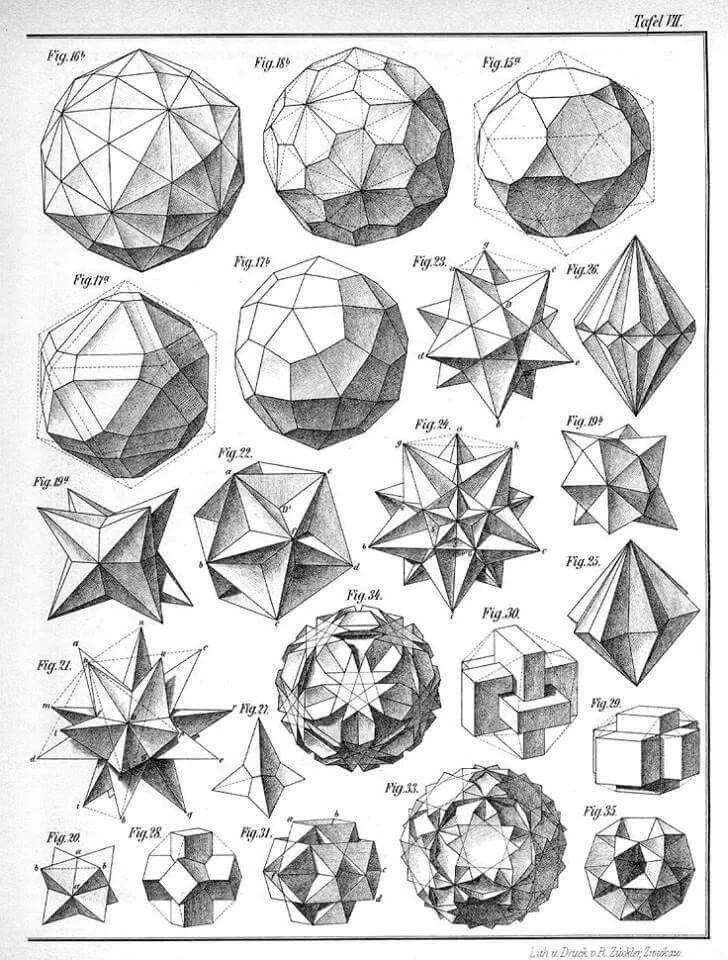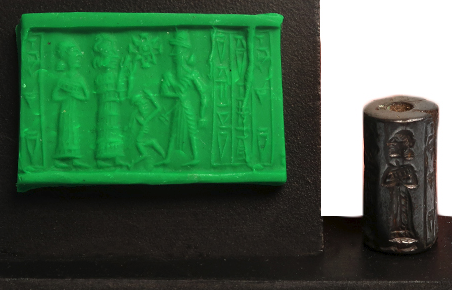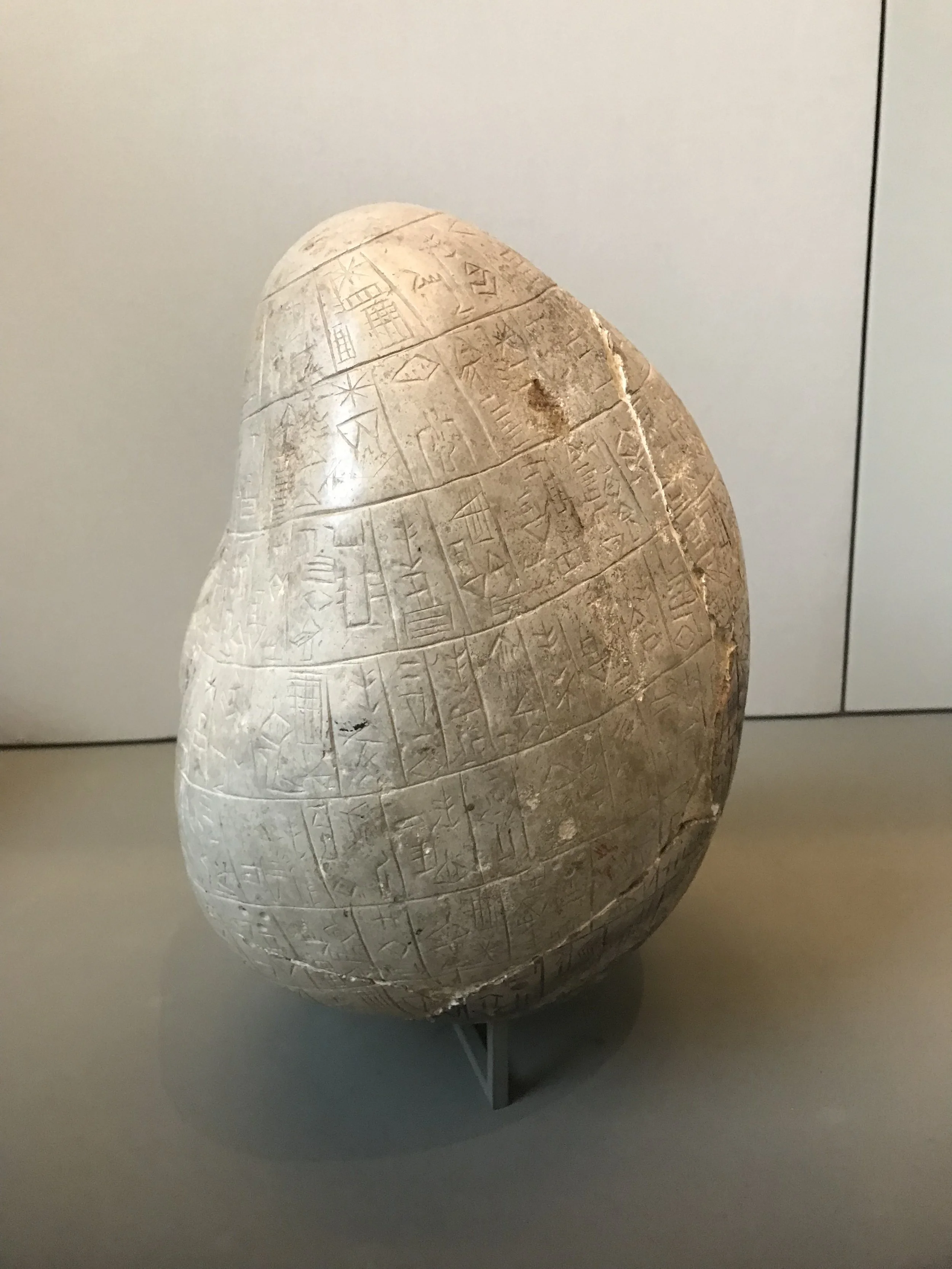About the Apkallu Design
There are many options for the shape of the artefact. Fundamentally it must be clearly artificial in structure so as to distinguish it from the background rocks upon discovery. The idea currently being pursued is that the object has many surfaces such that each surface contains the knowledge of a particular field or discipline of knowledge. This is essentially a platonic solid containing many polygons. If there are too many surface areas then the individual area for each subject is smaller. If there are too little surfaces then the area for each subject is great, but the number of disciplines of thought that can be covered is small. A good compromise between these extremes would appear to be something like a Dodecahedron, which contains 12 sides. This is also good because the number 12 is a number associated with sacred geometry and relevant to important geometrical symbolism. Other factors which are relevant to the number of sides includes ease of manufacturing of the artefact and the risks of erosion and weathering and how having edges may or may not enhance decay modes.
Size of the Apkallu Artefact
The size of the artefact could be very small like a cuneiform cylinder seal or much larger like the Code of Hammurabi. There is clearly a trade-off between practical build size, cost for production (and reproduction), and a minimum size required to convey the necessary information and knowledge. Another issue is making an artefact that can actually be found. The current thinking is that the artefact will be between 6 - 12 inches in diameter, similar to a football in size.
Sumerian cylinder seals, which tend to be around 1 inch in length. The one shown is 2.2 cm (7/8 inch) long and is a cylinder seal with frieze depicting a standing robed figure in advancing pose facing a standing figure in flounced robe with hands raised, star above a small dancing figure, fourth robed figure to the rear, three columns of cuneiform text. It dates from Old Babylonian 20th - 18th Century B.C and is made of Hematite. The seal also contains text of cuneiform writing (credit: K. F. Long, from private collection of the same).
Code of Hammurabi, dating to 1754 BC, constructed under the orders of the 6th Babylonian king Hammurabi. It is 2.25 m (7.4 ft) tall contains text written in the Akkadian language using cuneiform script carved into the diorite stele. It consists of 282 laws (credit: Photo by K. F. Long, located in Louvre, Paris).
Material of the Apkallu Artefact
The material that the artefact may be made from spans a variety of options. The requirements are to survive for 100,000 years, to not degrade the information content engraved on it, which suggests a hard stone material. Clearly material experts need to be consulted, as well as sculptors to see what materials have survivability but also an inability to be engraved with text and images. The material must also be capable of surviving exposed to the weathering elements of the Earths atmosphere, being buried under ground or even sitting at the bottom of the ocean floor. Meanwhile, some of the material options currently being considered includes:
Diorite
Steatite
Hematite
Obsidian
Amethyst
Lapis Luzuli
jade
quartz
Agate
Onyx
Jasper
Serpentine
Carnelian
Granodiorite
An artefact observed to contain much cuneiform written text in addition to logograms, which illustrates what such a minilithic artefact may look like. (image credit: K. F. Long, located at the Louvre, Paris)
Ideas Page for the Minilithic Artefact
On this page we will list any good ideas as they come in and keep a record of them as best as we can. This way the design can become a truly human endeavour as many creative ideas are put into its construction. It is expected that the project and the design of the artefact will evolve substantially as a result. Note that rather than capture all discussions, critique, objections or statements of support, the approach here is to capture 'specific' ideas relevant to the design of the artefact.
Encode fractal like information into the text, so that more information appears as you look closer under higher magnification (Rob Swinney, 29/06/18)
Surround the stone artefact in Amber like prehistoric insects were preserved. Recommend relevant book The Knowledge by Lewis Dartnal (Neil Raha, 29/06/18)
If you want to create a 100,000 year device, why not enhance your proposed approach by imbedding your dodecahedron into a clear sphere, then place this sphere as a floating sphere in a fountain. These floating sphere fountains (I think they are called Kugel fountains) would be of cultural interest, have an aesthetic beauty, and serve a philosophical role as a "fountain of knowledge" or “philosopher’s stone”. They could be placed at museums of natural history or other cultural centers. These floating sphere fountains already exist, but typically with a granite sphere, and they do attract attention as you can freely rotate the sphere by hand while it is sitting on its spherical bearing cup with the water serving as the floating medium. They could be made any size depending on the venue, but the information encoded on the dodecahedron would be the same. In the event of a long dormant period due to cataclysm, the spheres would encapsulate and protect the dodecahedron from degradation, and when discovered could be polished back to a clear surface allowing future humans to "see" what is in the middle of this sphere (Sonny White, 19/04/18).
Regarding the Information encoding, potential languages to be used, and Decipherment, one area that immediately strikes me is that there is research in the field of anticryptography as to how information can be presented such that it can be deciphered without any knowledge of the language used. This of course is important, because it may be that future post-disaster humans do not speak any current languages. As you note, it will be necessary to encode the information such that it is easily decipherable. I would draw your attention to the following book: Anticryptography: The Next Frontier in Computer Science, Brian McConnell, O’Reilly Media, Inc, 2001. Although the book focusses on encoding signals to be transmitted such that extra-terrestrials can decipher the message, the principles apply equally to "messages to the future". To quote from the author "One of the things I discuss at length in my book is the idea of using algorithms (short computer programs) as a foundation for communication. Using programs, you can send what are, in effect, living symbols. This enables the sender to transmit information very efficiently, and also to describe things that cannot be defined with static images or equations." Note that though algorithms are used, one does not require a computer to decipher them. Hopefully the above notes are of interest, and as I state if the project goes forward and I can help out (particularly with information theory and encoding) then please let me know. (Chris Corner, 19/04/18).
A device offering Maxwell’s equations or the periodic table of the elements might then be seen as the work of the devil, and be destroyed, especially if the preceding disaster resulted, or is believed to have resulted, from human hubris – a highly plausible scenario (Stephen Ashworth, 20/04/18)
I think the endevour to create such a device in itself has high intrinsic value, as it would lead to debates about what is considered "fundamental", "canonical" or "principal" in several different domains of human activity (Andreas Hein, 29/04/18).




